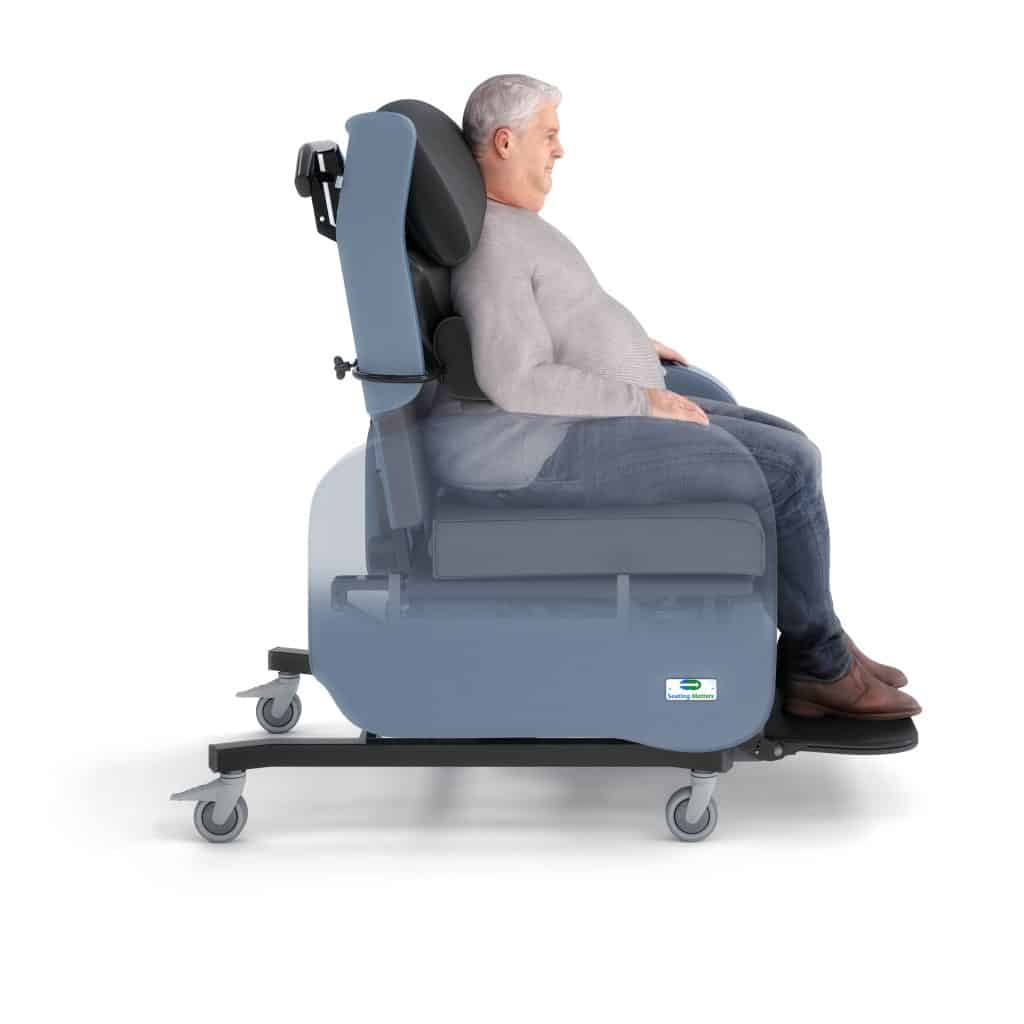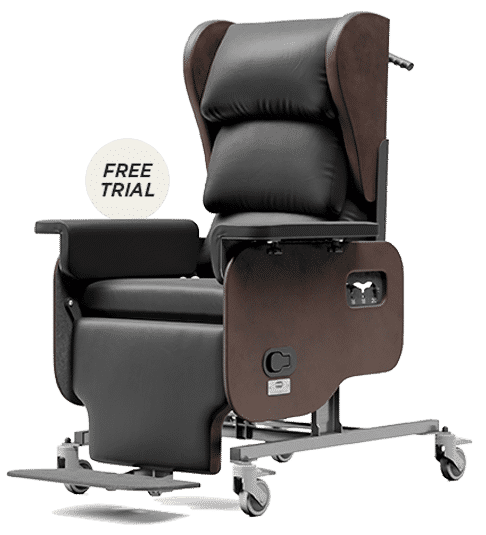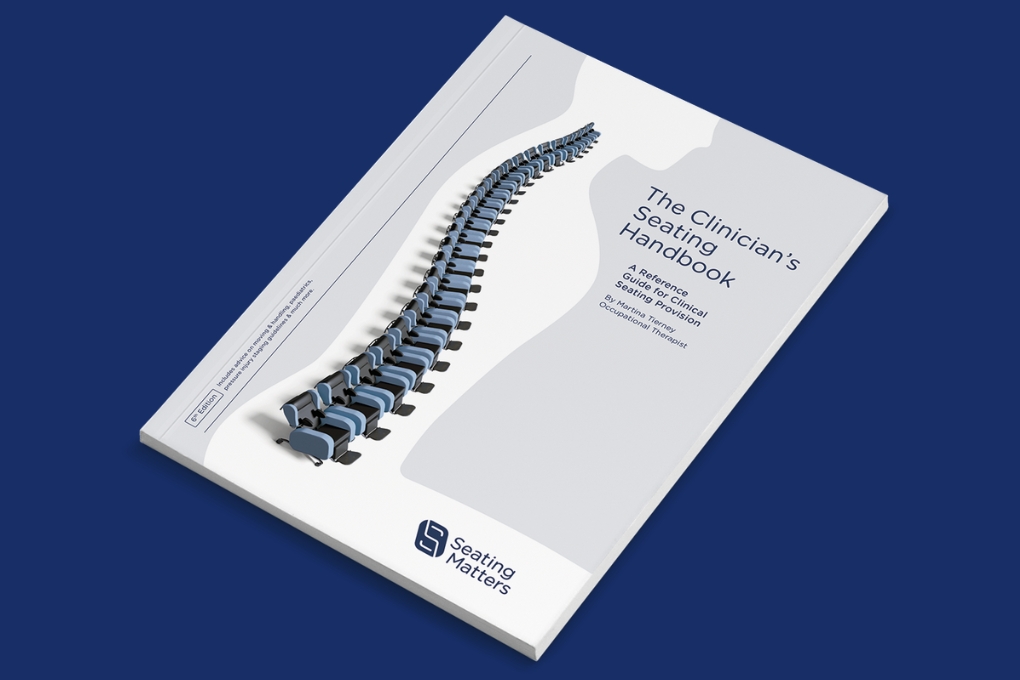Case Study (Bariatric Sorrento): 41-year-old patient (Alan) – 294kg, Unable to Sit Unaided
This bariatric chair case study is a real patient scenario. The images have been created from real photographs taken with permission. This is a real person in a real situation but illustrations have been used in order to protect their identity. Images & Content © Seating Matters 2024.
Background
- 41-year-old individual (Alan)
- 650 pounds/294 kg/46.5 stone
- Bariatric
- Unable to sit unaided
- Low blood oxygen saturation
- Respiratory infections
Problems with Old Chair
Alan did not have a chair that met his seating and postural needs and accommodated his weight.
Caregiver Issues
Alan’s caregivers reported that Alan spent most of his day in bed. He was too weak to transfer and there was a high risk to both staff and patients during transfers as no suitable chairs were available.
When Alan sat in a more upright position in bed, he fatigued easily due to lack of postural support and couldn’t tolerate this position for very long. Due to his minimal position changes from day to day, Alan was developing red areas on his skin. He repeatedly showed low blood oxygen saturation.
Alan had also contracted multiple respiratory infections due to his inactivity and inability to sit upright for prolonged periods of time.

BEFORE
Alan sitting in his old chair

AFTER
Alan sitting in a Bariatric Sorrento
Postural Issues
- Alan fatigued easily and couldn’t tolerate an upright position for very long.
- Alan’s reclined position in bed caused recurrent chest infections, and contractures of the lower limbs were beginning to emerge.
Intervention
During his assessment, it was decided that Alan would trial the Bariatric Sorrento™. The removable arms made it possible to complete a safe transfer with Alan, after which the chair was adjusted to a tilted position. The initial position was familiar as it was close to the position Alan maintained in bed.
The Sorrento™ chair has a waterfall back with three back cushions. The third lumbar cushion on the Bariatric Sorrento™ was removed to allow Alan to sit right back into the chair and gain support for his upper back. This was a challenge before due to a pronounced gluteal shelf.
Results
Qualitative Client Feedback
Alan was pleased to be able to sit out securely. The special features of the Bariatric Sorrento™ meant that his back, feet and legs were properly supported, increasing Alan’s comfort and security in the chair.
Sitting out improved Alan’s breathing and he felt his quality of life and his mood improved when he was able to get out of bed and interact with others from a seated position. The motorised feature of the chair gave Alan some control over his own position. This was very important to him.
Postural Changes
- Alan sat up straighter, but he could use the handset to readjust his position for increased comfort, accommodating his posture.
- The special feature of removing the third lumbar cushion meant Alan’s back was fully supported. This increased his comfort and ability to sit out for extended periods of time.
- Alan’s feet were securely loaded on the footplate, reducing the risk of sliding into a posterior pelvic tilt.
Caregiver, Family Feedback
Caregivers were pleased with Alan’s progress and happy with the reduction in risk of movement and handling when transferring him each day. Alan’s posture, core strength and mobility began to steadily improve.
Functional Changes
After a few weeks, the caregivers attempted standing transfers. This was significantly aided by a negative angle leg rest, helping Alan get his feet into a position that would give him a safe, stable base when standing. The caregivers then used the anterior tilt to assist Alan in standing up.
With time, Alan was able to perform a standing transfer when returning to bed with the caregivers’ assistance, though he required significantly less help than before using the Bariatric Sorrento™.
Impact on Skin
- The redness on Alan’s skin disappeared due to better redistribution of pressure and frequent changes in position using the tilt in space feature on the chair.
Social Interaction
Alan reported feeling stronger as he was able to sit comfortably for up to 7 or 8 hours per day, thanks to regular position changes and weight shifts. This increased mobility allowed him to join activities in the common areas.
Alan’s story and other patient case studies are found in The Clinicians Seating Handbook. This practical guide by world-renowned OT, Martina Tierney will assist you in the prescription and use of therapeutic seating for patients with various conditions. It’s the best place to start.
*Note – the purpose of this blog is to give an overview of the product with some tips to consider on its use. This is not intended to be a substitute for professional or medical advice, diagnosis, prescription or treatment and does not constitute medical or other professional advice. For advice with your personal health or that of someone in your care, consult your doctor or appropriate medical professional.




